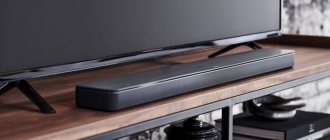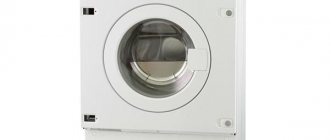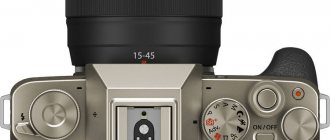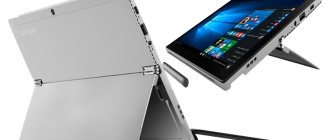Table: Top 12 best tires
| Model | Best Features | Diameter, R | Run Flat | Maximum speed index | |
| Pirelli Ice Zero | studded according to reviews | 14/15/16/ 17/18/19/ 20/21/22 | optional | H (up to 210 km/h) | Find out prices |
| Bridgestone Blizzak Revo GZ | studless tires according to reviews | 13/14/15/ 16/17/18/ 19 | No | S (up to 180 km/h) | Find out prices |
| Continental IceContact 2 | studded 2021 - 2017 | 13/14/15/ 16/17/18/ 19/20/21 | optional | T (up to 190 km/h) | Find out prices |
| Continental ContiWinterContact TS850 | studless 2021 - 2017 | 12/14/15/ 16/17/18/ 19/20/21 | optional | W (up to 270 km/h) | Find out prices |
| Continental IceContact 2 SUV | studded for crossovers | 15/16/17/ 18/19/20/ 21 | optional | T (up to 190 km/h) | Find out prices |
| Bridgestone Blizzak DM-V2 | studless for crossovers | 15/16/17/ 18/19/20/ 21/22 | No | T (up to 190 km/h) | Find out prices |
| Nokian Tires Hakkapeliitta 5 | inexpensive | 13/14/15/ 16/17/18/ 19/20 | optional | T (up to 190 km/h) | Find out prices |
| Cordiant Winter Drive | budget (Velcro) | 13/14/15/ 16/17 | No | H (up to 210 km/h) | Find out prices |
| Nokian Tires Hakkapeliitta 8 | studded, “Behind the wheel” test | 13/14/15/ 16/17/18/ 19/20/21 | optional | V (up to 240 km/h) | Find out prices |
| Nokian Hakkapeliitta R2 | studless, “Behind the wheel” test | 15/16/17/ 18/19/20/ 21 | optional | R (up to 170 km/h) | Find out prices |
| Nokian Tires Hakkapeliitta 9 | studded, Autoreview test | 16/17/18/ 19/20/21/ 22 | optional | T (up to 190 km/h) | Find out prices |
| Nokian Tires Hakkapeliitta R2 SUV | studless, review "Autoreview" | 14/15/16/ 17/18/19/ 20/21 | optional | R (up to 170 km/h) | Find out prices |
TOP 5 studless winter tires
Studless tires are ideal for any roads in mild temperate climates with slight frosts. By increasing the thickness of the lamellas used in the design, maximum adhesion to the road surface is ensured, and some manufacturers even include hard fragments and elements in the plastic to improve the quality of products, ensuring maximum vehicle maneuverability in snow drifts.
Goodyear Ultragrip Ice 2
Goodyear Ultragrip Ice 2 tires guarantee a confident ride and quick braking in icy conditions. Such winter tires are characterized by maximum stability, are not afraid of even the lowest temperatures and are not susceptible to freezing. Its cost is from 3 thousand rubles.
Nokian Hakkapeliitta R2
According to experts, the rating of studless winter tires for 2018-2019. would be incomplete without Scandinavian tires, which are considered the best option for low-traffic roads. They are durable and highly functional, due to which the car can be easily controlled during drifts and on ice, and the special design of the tire sidewall allows you to quickly get out of snow ruts. The products are ideal for SUVs. Depending on the wheel diameter, the cost of Nokian Hakkapeliitta R2 is 3.7 -11.5 thousand rubles.
Continental ContiViking Contact 6
For frosty weather and frequent snowfalls, it is better to choose tires that are made of strong rubber and silicates. To achieve maximum stability, each tire is equipped with diamond-shaped blocks and an asymmetric tread pattern. A vehicle equipped with Continental ContiVikingContact accelerates easily on roads with compacted snow and brakes quickly on wet or icy roads. For such non-studded tires you will have to pay at least 7 thousand rubles.
Pirelli Ice Zero Fr
Pirelli Ice Zero Fr products occupy a special place in the 2018-2019 winter tire rankings. When an experienced driver is driving, he will appreciate the high quality of such tires, which are distinguished by a very dense arrangement of lamellas. The model is not recommended for dry asphalt surfaces, but the car is comfortable to drive on snowy roads and wet roads. The cost ranges from 5 thousand - 9 thousand rubles.
Bridgestone Blizzak DM
Tires from this manufacturer are designed taking into account the specific climate of Russia and are ideal for crossovers and cars. The rubber is quite durable and wear-resistant. The choice should be made in its favor if it is necessary to move on icy or very slippery surfaces at sub-zero temperatures. Each tire is equipped with two layers, so reliable grip of the wheels on the road is ensured even after abrasion.
Pirelli Ice Zero - the best winter studded tires according to reviews (2019 - 2020)
In the ranking of studs for winter, pride of place is occupied by Pirelli Ice Zero tires with effective braking and good stability. They hold the road well at speed, behave confidently on steep snow-covered inclines, brake and stop quickly and completely, after which the car starts moving without problems.
No tendency to skid, good grip on compacted and loose snow and ice. The rubber is soft, quite noisy, but not critical. The noise is noticeable mainly on asphalt surfaces, but not audible on snow. A large number of studs, which results in reduced braking speed on asphalt. But it confidently handles any road.
Pros *
- braking;
- directional stability;
- grip on ice, snow (loose, compacted);
- holds any road.
Minuses *
- noisy, on asphalt;
- reduced braking quality on asphalt due to a large number of studs.
Gislaved Nord Frost 200
The model replaced the “hundredth” model in the winter season 2015/2016.
Unlike its predecessor, it received an asymmetrical tread pattern, based on the discontinued Continental IceContact. The tire has relatively weak performance on dry and wet asphalt, provides average grip on ice and excellent grip on snow.
Combined with a reasonable price, this is a reliable choice for winter use.
Bridgestone Blizzak Revo GZ – the best winter non-studded tires according to reviews
Among velcro tires, the leading place in the ranking is occupied by Bridgestone Blizzak Revo GZ winter tires. They became the best in their category according to reviews and tests. Studless tires have a powerful sidewall, which provides excellent handling. There is practically no noise: quiet, soft, holds the road, and takes turns.
Studless tires are an ideal option for cities where winters have little snow but are cold. Comfortable tires with which you can confidently drive your car at any speed. In the snow they behave almost the same as studded ones. They react clearly and practically without delay to steering wheel turns.
Pros *
- quiet;
- softness;
- acceleration;
- high-quality grip;
- controllability;
- braking on compacted snow and asphalt.
Minuses *
- braking on ice is worse;
- sufficiently rigid passage of uneven asphalt;
- At temperatures above zero there is a feeling of floating tires.
The best studless winter tires R16
Such tires are designed for operation in not very cold winter conditions, in regions where ice and high snow cover are rare phenomena. There are quite a few such options on the market, and so that you don’t make a mistake in choosing, we have selected the 3 best R16 winter tires based on driver reviews in terms of quality, safety and ease of use.
Kumho WinterCraft WP51 195/55 R16 87H
These are winter tires designed for installation on passenger cars. Its tread wears out very slowly due to its abrasion resistance. The tire holds the road well, passes smoothly over various surfaces and brakes quickly enough, which reduces the likelihood of an accident. It gives good grip on the highway within the city at speeds of up to 80 km per hour, while it behaves flawlessly even when reaching 200 km.
Since the profile of this rubber is not very high, the calmer the ride, the more reliable the product and the easier it is to maintain control of the car. But in off-road conditions and on uneven, poorly paved areas, this option can be a little capricious. Being intended for use in winter, you can be sure of safety when driving on lightly snowy roads.
Advantages
- Does not tan at low temperatures;
- High-quality, solid sidewall;
- The tread wears out slowly and evenly over the entire surface;
- Excellent resistance to aquaplaning;
- It is almost impossible to break this tire.
Flaws
- A bit noisy.
Due to its good wear resistance, the Kumho WinterCraft WP51 195/55 R16 87H tire is often chosen for installation on taxi service vehicles that have high mileage.
Bridgestone Blizzak DM-V2 235/70 R16 106S
These tires from Bridgestone are designed specifically for winter driving. With a diameter of 16″, they are used for installation on SUVs, and the maximum rubber load capacity is 950 kg. It allows you to safely and comfortably accelerate to a speed of 180 km per hour, but, naturally, the worse the road condition, the more difficult it will be to do this without problems. The tire is recognized as being of high quality in operation and easily serves for 1-2 years without consequences.
This model confidently rides on rolled and fresh snow, calmly getting out of small snowdrifts. It is also not afraid of ice, on which the car practically does not drift to the side. This improves handling and, as a result, increases the level of safety and comfort when driving in bad weather conditions. This is a pretty good option in terms of price-quality ratio.
Advantages
- Good adhesion properties;
- Easy to clean from dirt and snow;
- Durable sidewall for increased service life;
- Does not create problems in car maintenance;
- Acceptable noise level.
Flaws
- Not detected.
Thanks to the speed index of 180 km per hour, these R16 winter tires are good for car racing outside the city or on special sites.
Dunlop Winter Maxx WM02 215/55 R16 97T
This is another studless winter tire for heavy vehicles weighing up to 750 kg. They are made in Japan from new materials and have an improved design. They are distinguished by a reduced braking distance on ice thanks to a special tread pattern. They are also characterized by an increased number of lamellas by 17%, which guarantees a larger contact patch for high-quality adhesion to the road surface.
Dunlop Winter Maxx WM02 215/55 R16 97T has good grip properties also thanks to the rubber compound, which tightly fits small irregularities on ice. This was made possible through the use of 4D Nano Design technology in the manufacture of tire tread. Because of this, the rubber guarantees tight contact with the surface in the presence of a large amount of ice. This model is also characterized by a long service life due to the inclusion of components that slow down tread wear.
Advantages
- Virtually indestructible;
- Handling is excellent in loose snow and slush conditions;
- Does not lose elasticity over time;
- Not very noisy;
- Predictable behavior on any road section.
Flaws
- It floats a little on dry and wet asphalt.
Reviews note that Dunlop Winter Maxx WM02 215/55 R16 97T behaves a little better on snow than on ice, because these tires are not studded after all.
Viatti Bosco S/T V-526 245/70 R16 107T
...Having tested this R16 winter tire, I can say that it behaves quite calmly both in snow and on icy roads. But due to the lack of spikes, it is still not recommended to abuse its good adhesion properties...
Expert opinion
First of all, these tires catch your eye because of their low price. Having a load index of 108, they are intended for heavy vehicles. They are created only for winter use, although there are no studs on the tire. The rubber has one of the highest speed indexes - 190 km/h and is distinguished by its confident behavior on both wet and slippery and snowy roads.
This model has an asymmetric tread, when its outer and inner parts have a different pattern. The first provides optimal rigidity for stability on the surface and maneuverability when cornering, while the second guarantees high-quality water drainage and reduces the likelihood of aquaplaning. In total, this provides a safe and comfortable ride in various weather conditions.
Advantages
- It “rows” well in the snow;
- Increased wear resistance;
- Excellent surface adhesion;
- Sturdy tire;
- Impeccable handling on ice.
Flaws
- A bit noisy.
3. Continental IceContact 2 - the best winter studded tires (2018 - 2019)
Quiet, comfortable tires with Continental IceContact 2 studs. Produced in Russia using German equipment, the quality of the tires is high, comparable to their European counterparts. At the same time, the price is affordable. They hold the road, there is no sudden stalling when skidding on ice, they are controlled smoothly and confidently. Good handling both on asphalt and on snow or ice; there is no roll when cornering.
It brakes excellently on any surface and holds the road, including in icy conditions. Well balanced, practically no rutting. There is no characteristic noise of unbroken studs, while there are more studs on the tire itself than on noisier analogues, and the studs do not fly out. The rubber is soft, but still holds the course perfectly.
Pros *
- handling on any track;
- lack of rolliness when turning and changing lanes;
- absence of characteristic noise of spikes;
- road traction.
Minuses *
- some noise, but no discomfort;
- price.
The best winter studded tires R16
This type of tire is used in regions with harsh winters, when ice often forms on the roads. Thanks to the presence of studs, they adhere well to the road surface, which eliminates skidding and provides comfortable and safer movement, including at high speeds. We reviewed the range of European and Asian manufacturers and, based on compliance with the specified selection criteria, included the 7 best options in this rating category.
Firestone Ice Cruiser 7 205/55 R16 91T
This is an average-priced tire designed for installation on passenger cars. The tire behaves confidently when driving fast, as it is designed for operation at speeds of up to 190 km/h. It has a directional design with a distinctive V-shaped pattern, giving it increased performance on wet asphalt surfaces. This also improves road grip and reduces the risk of aquaplaning.
The studs on the Firestone Ice Cruiser 7 205/55 R16 91T literally bite into the surface, which shortens the braking distance and minimizes the risk of the car moving to the side when cornering on slippery road conditions. The reinforced sidewall guarantees increased service life. This tire behaves well both on ice and snow, but when driving on a compacted surface, its grip properties are not so bright compared to studless models.
Advantages
- Good balance of price and quality;
- No strong vibrations;
- Ease of driving;
- Increased strength;
- Surface abrasion resistance.
Flaws
- When driving on dry asphalt it sometimes makes faint noises.
According to reviews, this option is good for use both within the city and outside it.
Pirelli Formula Ice 205/60 R16 96T
Winter studded Pirelli Formula Ice tires are included in the rating of the best tires due to the combination of impeccable grip on the road surface in winter in all weather conditions, be it ice, snowfall or thaw with slush. It provides good traction, which is especially important when there are snowdrifts on the road. Hexagonal studs are made of aluminum and are reliably protected from falling out by means of flanges.
In the rating of winter tires, Pirelli Formula Ice 205/60 R16 96T guarantees excellent grip on snowy and icy road surfaces due to the frequent arrangement of sipes, which are located on each tread block. At the same time, rapid removal of moisture from the contact patch is ensured, which is made possible due to the combination of several diagonal and two longitudinal grooves. This model is suitable for use in urban environments due to the directional V-shaped tread pattern.
Advantages
- High load index – 96, which corresponds to 710 kg;
- Reliable protection against aquaplaning;
- The spikes bite into the snow well;
- Gives a smooth and even ride;
- High level of comfort when moving.
Flaws
- Not detected.
Overall, the Pirelli Formula Ice 205/60 R16 96T tire is the best option in terms of price-quality ratio. But it is useless to expect equally impeccable behavior from it on dry and wet asphalt.
Continental IceContact 2 SUV 215/65 R16 102T
According to the test results of the Finnish car magazine Tuulilasi, this winter tire model confidently took second place. Compared to the previous version from this company, the manufacturer was able to improve the quality of vehicle handling by 2% when there was ice on the road and by 9% when the road was dry. It maintains a stable position and remains obedient even in heavily snowy areas. It contains many polymers and silica, as well as rapeseed oil for softening, which prevents it from hardening at low temperatures.
By maintaining its flexibility in winter, effective traction of the wheels with the road surface is guaranteed. This, in turn, gives a more confident, calm, comfortable and safe ride. Also, due to this, the car behaves well when entering corners at high speeds, but it is still not recommended to drive on ice with it. This tire has an asymmetric tread pattern, which provides high traction for quick acceleration and trouble-free braking.
Advantages
- Lightweight mass of spikes;
- Excellent performance on icy roads;
- Durable stud fastening;
- Shortened braking distance;
- There are ice pockets for spikes.
Flaws
- Not detected.
According to reviews, the Continental IceContact 2 SUV 215/65 R16 102T tires run for several seasons with virtually no loss of studs.
4. Continental ContiWinterContact TS850 - the best winter studless tires (2018 - 2019)
Among studless winter tires, the leader is the Continental ContiWinterContact TS850. According to reviews, these are truly quiet, comfortable tires with good handling and grip. It holds the track in heavy snow, and on ice there is also good grip for non-studded tires.
Excellent tires for those who prefer silence and comfort when driving in the winter season. The tires are soft, comfortable, without a sporty bias; they drive on asphalt without snow at almost summer speeds. Slower in deep snow or slush. Directional stability is above average, response to steering movements is moderate.
Pros *
- quiet;
- good handling;
- grip with the road;
- comfort.
Minuses *
- some sizes are difficult to find;
- not suitable for driving in deep snow or slush; they skid;
- average directional stability.
Continental IceContact 2 SUV – studded tires for crossovers and SUVs
If you have a crossover or jeep, pay attention to the Continental IceContact 2 SUV winter tires. The rubber holds up well on any surface, including icy conditions. Quiet, soft, the steering response increases with it, the chassis works better.
Moderately noisy winter tires, comfortable, a good option for both big cities and trips out of town. High-quality braking on dry and wet asphalt, in this quality there are practically no differences with studless tires. It runs and brakes well in the snow, and has good cross-country ability in slush. It walks and brakes confidently on ice and packed snow, there is no rutting on the asphalt, and there are no lateral stalls.
Pros *
- low noise;
- road grip;
- softness;
- holds the road in ice and snow;
- reliability.
Minuses *
- high price;
- Soft sidewall but still durable.
BFGoodrich G-Force Stud
The model from a subsidiary of the French Michelin is more focused on dry and wet asphalt, where it is superior to its direct competitors (and even some premium ones) in braking and handling. But on ice and snow they are slightly inferior in grip qualities.
The model is more suitable for city use or quiet driving in difficult winter conditions.
Bridgestone Blizzak DM-V2 – studless tires for crossovers and SUVs
To ensure safety while driving in winter, owners of jeeps, crossovers, and SUVs prefer studless tires from a well-known brand - Bridgestone Blizzak DM-V2. Driving on such cars is often more aggressive, on ruts, potholes, and different surfaces. The tires behave well on wet asphalt and dry surfaces, and feel confident in slushy snow. Cup protectors allow you to walk in the snow without slipping.
The tires remain soft at any temperature, which allows them to remain silent in any weather.
“Swallows” small cracks and potholes on the asphalt. On clean and smooth ice, the Velcro has a fairly long braking distance; at temperatures above -10, it is very slippery on ice and compacted snow and can skid. But in frosts of -15 or more, the grip is more confident on ice, on compacted snow, and on any surface.
Pros *
- value for money;
- holds any road;
- excellent grip;
- behaves well in the snow, in slush;
- soft at any temperature;
- silent.
Minuses *
- drifts on compacted ice;
- it’s hard to get out of a rut;
- long braking distance on ice.
TOP winter tires 2018-2019 – selection criteria
Car tires from different manufacturers have certain advantages and disadvantages. There are no ideal models, however, it is possible to choose the best winter tires based on a number of parameters. During operation, each type of winter tire meets certain operating conditions at low temperatures. Buyers often face the problem of wondering which winter tires are best to choose for their car. When choosing the most suitable model, the following factors must be taken into account:
- Features of the climate and road conditions of a particular area;
- Carrying capacity of the machine, its brand;
- Car type – passenger car or SUV;
- The nature of the car owner's driving style;
- Value for money.
Nokian Tires Hakkapeliitta 5 – inexpensive studded tires for winter
In the budget segment of studded winter tires, Nokian Tires Hakkapeliitta 5 have proven themselves with a long service life. The tires do not have spikes coming off, and the tires hold the road well in mixed driving styles. The tread does not wear off for a long time, the studs do not allow air to pass through.
The studded Nokian Tires Hakkapeliitta 5 handle equally well on ice and snow; on asphalt they brake a little worse, which is understandable for this type of winter tire. The rubber has excellent build quality and the installation of studs, allowing it to hold the road well even in part-time drive. They have a long service life and do not wear out for a long time.
Pros *
- holder;
- long service life;
- high-quality assembly and installation of studs;
- handling (ice, snow - compacted or loose);
- The stud does not allow air to pass through.
Minuses *
- relatively high cost;
- Brakes worse on asphalt than on ice and snow.
Our rating of winter tires for the 2018-2019 season
- Guys, I took this off last night! — our photographer Dima boasts in the morning.
Indeed, even the aborigines will not remember such bright flashes of the northern lights. And Andrei Mokhov and I slept through everything exhausted. After all, in a week on the tracks of the Swedish Arctic Falls training ground we need to test 22 sets of winter tires! But in the final protocol, 21 models of size 205/55 R16 remained. Why? I'll tell you now.
How are tires selected for our comparison tests? Before testing, we send requests to tire companies asking them to provide one or two sets. And since the tests are carried out at the end of the winter season - this year in mid-March - some companies already have new models ready for production. We take these with pleasure - in order to provide our readers with up-to-date information about these tires in the fall. But we reserve the right to check its authenticity - to conduct a so-called doping test. This year we also had to resort to checking - and for good reason.
We carried out the tests at one of the seven test sites at the Arctic Falls test site: here, on an area of about five hectares, all the tracks necessary for winter tire testing are compactly laid out
The list of participants in our test included 13 studded and nine non-studded models. The bias towards studs is due to statistics, because more than 70 percent of Russian drivers choose “nails”. The hot new products in this class are the Korean Hankook Winter i*Pike RS2 tires and the Japanese Yokohama iceGuard iG65 tires. Both of them followed the “Scandinavian” path of development - they increased the number of studs following the example of the successful models Continental IceContact 2 and Nokian Hakkapeliitta 9. But where is Michelin with the new model X-Ice North 4, which also noticeably increased in studs? Alas, they refused to provide us with these tires, and we did not find them on sale.
Ice is a very capricious coating. To obtain objective results, the measurement cycle must be repeated several times.
Among the beginners, there are also those who have chosen the traditional number of studs - 115-130 pieces per 16-inch tire. These are the Japanese models Toyo Observe Ice-Freezer, Firestone Ice Cruiser 7 and the Chinese-Singapore GT Radial IcePro 3, as well as the Russian Cordiant Snow Cross 2 tires, which are not included in the final protocol.
On ice and snow, measurements on each set of tires are performed 12-16 times. There are half as many races on asphalt: the surface is more stable
In the non-studded class, the main intrigue is the duel between the new Continental VikingContact 7 and Nokian Hakkapeliitta R3. Or maybe fresh Asian models - Yokohama iceGuard iG60 and Hankook Winter i*cept iZ2 - will intervene in their dispute? By the way, it is here, at the Swedish Arctic Falls test site (translated from English as “Arctic Falls”), that Bridgestone and Yokohama rent sites for their winter tests.
Overhang (the protrusion of the studs above the tread surface) is the most important parameter for winter tires. If it is less than a millimeter, the tires will probably fail on ice
Well, we had to come to Sweden twice. The first time we sat there for a week, running the entire testing program on snow and ice. And then, already in April, on the roads that had just been cleared of ice, they measured the braking distance on wet and dry asphalt - and assessed the acoustic comfort and smoothness of the ride. Well, then, using the traditional system of converting results into points, we summed up the results.
The full version is available only to subscribersSubscribe now
I'm already subscribed
Cordiant Winter Drive – budget studless winter tires (Velcro)
Among studless tires, the so-called Velcro tires, in the budget category, according to reviews from car owners, Cordiant Winter Drive took pride of place. Almost silent, it moves and brakes well in slush, loose and compacted snow. On ice it behaves somewhat weaker, however, in city conditions good handling is maintained.
Completely predictable behavior of a car with Cordiant Winter Drive tires, abrasion-resistant, soft, with good tread, but at temperatures from 5 degrees above zero it begins to “float”. An excellent option for a quiet winter ride; it handles well in the snowdrifts.
Pros *
- predictable behavior on various surfaces;
- does not wash off;
- soft;
- good tread;
- acceptable cost.
Minuses *
- braking on ice is worse;
- somewhat noisy for a non-studded shoe;
- floats at temperatures above +5.
Nokian Tires Hakkapeliitta 8 – studded tires: test by Za Rulem magazine
Nokian Tires Hakkapeliitta 8 tires were tested by Za Rulem magazine and named the best studded tires for winter driving. It has diamond-shaped spikes, and not just pins, it behaves confidently both on the asphalt and in ruts, it does not lead or throw. When cornering, the tires behave smoothly and predictably.
On fresh wet snow, on frozen ice crust, compacted snow and ice it behaves confidently and predictably, brakes clearly and confidently along a predictable trajectory. When cornering, the rear axle can drift a little, but it is quite controllable. On ice it behaves the same as on asphalt within a reasonable speed, there is noise in the range from 60 to 110 km/h.
Pros *
- diamond-shaped spines;
- no rutting;
- cornering control;
- does not float on asphalt;
- holds the road (ice, snow, porridge).
Minuses *
- price;
- noisiness.
Nokian Hakkapeliitta R2 – studless tires: test by Za Rulem magazine
Quiet studless tires for driving in winter, one of the best according to tests by the magazine “Behind the Wheel” - Nokian Hakkapeliitta R2. It holds the road well on ice, freshly fallen snow and slushy snow; it behaves confidently when changing lanes and parking, including in parking spaces that have not been cleared of snow.
The rubber is strong, small holes, joints, bumps and tram tracks are not felt at speed, they pass very smoothly. An excellent option for winter tires for use in urban areas. In warm weather above +5, the car reacts worse to steering wheel turns, and when overtaking, ruts appear. However, rubber wears out and wears out quite quickly, but this does not have much effect on the “stickiness”.
Pros *
- quiet;
- soft;
- sustainability;
- holds the road well;
- high speed index.
Minuses *
- relatively fast wear;
- price.
11. Nokian Tires Hakkapeliitta 9 – studded tires: Autoreview test
According to tests carried out by the Autoreview magazine, Nokian Tires Hakkapeliitta 9 became the best winter studded tires. Yakohama tires hold the road well, are soft, and ride on snow as if they were on asphalt. They behave confidently when cornering at high speed and during emergency braking.
The car goes uphill on these tires without slipping, and does not skid when turning on ice. The rubber is not afraid of ruts, including icy ones, the studs work 100% on ice, the handling is comfortable and predictable. It also handles well in slushy snow and has a short braking distance. Tires for snowy roads. At low speed there is no noise, it appears when the car travels over 120 km.
Pros *
- no rutting;
- no noise at medium speeds;
- holds the road;
- emergency braking;
- holds turns confidently.
Minuses *
- price;
- The break-in period is longer than with similar tires.
12. Nokian Tires Hakkapeliitta R2 SUV – studless tires: review “Autoreview”
Nokian Tires Hakkapeliitta R2 SUV tires drive along a snowy road at speeds above 100 km. They also perform well on the road with freshly fallen snow, in slush, on clean asphalt and even in puddles. Very quiet and soft tires, grips the road with any asphalt surface.
The car has good directional stability and a short braking distance. Nokian Tires Hakkapeliitta R2 SUV tires are suitable for the middle zone with mild winters, because the quality of handling decreases on purely winter surfaces and conditions. At the same time, with such tires the car goes through deep snow.
Pros *
- quiet;
- cross-country ability in snowdrifts;
- confidently keeps track;
- cross-country ability on ice, slush, and puddles.
Minuses *
- price;
- increased fuel consumption.
Choosing the right winter tires
For their manufacture, a special chemical composition is used to provide winter tires with the required properties. Car tires need to be changed depending on the season: it is recommended to change your car to winter tires when the temperature does not rise above 5-7 C during the week. To choose suitable winter tires, you should follow some recommendations.
Key characteristics of good winter tires
Run Flat Technology
Decide on the budget you are willing to spend on purchasing a set of winter tires. As a rule, the cost of tires is determined by the brand and country.
Winter tires can be studded or fractional, that is, non-studded (Velcro) - this is probably the main selection criterion. Moreover, non-studded ones can be European and Scandinavian. Each type is suitable for its own operating conditions:
- Studded - high-quality grip on the road surface and braking. They are intended for use on hard ice, an option for regions where winters are cold and harsh, with frequent ice conditions and for use outside the city. Such rubber is noisy, which is explained by the presence of spikes; it quickly wears off on asphalt and loses its characteristics.
- Studless Scandinavian tires are recommended where the winter is long and there is a lot of snow. They are not afraid of snowdrifts and snow drifts. Road traction is provided by treads: the more lamella cavities there are, the better the grip on the snow surface. There are also lugs along the outer edge of the tread, which provide the maximum contact patch. Recommended for use at temperatures significantly below -0 and below, on roads with a lot of snow. Such tires are soft and therefore not suitable for driving on ice, and on dry asphalt their wear resistance sharply decreases and they float.
- Studless tires of the European variety are an ideal choice for use in regions with mild winters, where sleet or rain often falls. They walk through slushy snow and are safe at high speeds. But in icy conditions and on compacted snow, the road grip characteristics are worse, when driving on dry asphalt at low temperatures, with slushy snow.
It is also important to look at the manufacturing date of winter tires, since the shelf life of winter tires is 5 years. Wear resistance indicator, the index is indicated on the sidewall.
It is better to choose the maximum indicator. Also, modern car tires are equipped with Run Flat technology: even when the tire deflates, it remains on the rim and remains able to bear the weight of the car.
Another indicator is the speed index: each tire model is designed for use in the speed range in which optimal adhesion of the rubber to the road is guaranteed.
Manufacturers
Previously, Scandinavian brands were considered the best producers of winter tires. But Russian companies produce tires with qualities that are not inferior to either their Scandinavian or European counterparts. Among Russian brands it is worth noting Amtel, Cordiant, Kama, Nokian.
Among European manufacturers of winter tires, Barum, Continental, Matador, Michelin are popular, and Japanese ones are Bridgestone.
Moreover, Nokian occupies a leading position in ratings based on reviews, as well as tests in car magazines, leaving French, Japanese and other competitors far behind. At the same time, it cannot be said unequivocally that Japan or France make tires for the Russian winter better than domestic manufacturers.
Based on the above rating, as well as recommendations for choosing tires, every car enthusiast will be able to make the right choice.
10 best winter tires according to owner reviews
Before choosing a specific model of studded tires, read about the characteristics and features of the technology, the pros and cons of the tire. Depending on your driving style and climate in your area, you can choose the perfect option for your car.
Viatti Brina Nordico V-522
Our rating opens with inexpensive tires from a domestic manufacturer. The tire is universal, designed for different weather conditions - from porridge with wet snow to ice. This model combines the principles of the “Scandinavian” and “European” schools of tire design. In the middle of the tread there are friction blocks, and at the edges there are hard blocks with spikes.
VSS (Variable Sidewall Stiffness Distribution) technology softens impacts when driving over obstacles. Beveled blocks along the edges of the tread displace slush and water from the contact patch with the road, which significantly increases traction, protecting the car from hydroplaning.
On a winter road, when there is ice, an asymmetrical tread pattern and a wide arrangement of studs work. Additionally, the elastic, soft tread and frequently spaced sipes improve driving on any road.
Viatti Brina Nordico V-522 R15
- Confident movement on ice.
- Good driving characteristics.
- Low price.
- Noise level.
Yokohama Ice Guard IG55
Good studded tires from a famous Japanese brand - an improved version of the previous IG35 model. They are made of silica and orange oil - the composition indicates plasticity and softness at low temperatures.
It is worth noting the complex tread pattern of the tires. In the central part there is an arrow-shaped longitudinal rib, which is responsible for the directional stability of the car. Multi-directional sipes provide the tires with good grip. The shoulder blocks have lugs that increase cross-country ability in deep snow. There are protrusions around the studs for better grip of the rubber on slippery surfaces. They also protect the spikes from deformation. The studs themselves have acquired a new star-shaped shape - they cling better to slippery roads and sit more securely in the tread.
Yokohama Ice Guard IG55 R15
- They hold the road very well.
- Complex tread.
- Technological spikes.
- Wear-resistant.
- Moderately quiet.
- They don't like ruts.
Nokian Tires Nordman 7
Mid-price segment tires from the legendary Finnish company. According to the manufacturer, this is a combination of uncompromising winter grip and wear resistance. The technologies used to create the tire provide a high level of safety.
Air Claw - air indentations in front of the spikes. They soften the effect of the stud on the road, reduce noise and vibration, and increase service life. Bear Claw technology - keeps the cleat in a vertical position. Improves the quality of movement on ice. A large number of slats drain water from the road.
The diamond-shaped stud guarantees good traction during acceleration and hard braking due to the increased contact area with the road. The angular edges of the studs help when moving at speed. The AirShockAbsorber system - a cushion under the stud - reduces noise when moving.
Nokian Tires Nordman 7 R15
- Predictable behavior.
- The spikes don't fly out.
- Soft move.
- Wear resistance.
- Over time, tears appear around the tenon.
Continental IceContact 2
Premium winter tires from a German manufacturer. The mixture contains rapeseed oil, thanks to which the rubber remains soft in the cold.
The tread with an asymmetric pattern has two zones. On the outer zone there are sinusoidal lamellas, which are responsible for controllability. The inner zone has a stepped structure, which guarantees traction during acceleration and braking.
The manufacturer has reduced the weight of the studs, increased their number and optimized their location. Such measures provide contact with untouched ice, which increases traction on icy surfaces. Crushed ice does not stick to the spike; it accumulates in special pockets and is removed under the influence of centrifugal force.
Continental IceContact 2 R15
- Low noise level.
- Good drainage.
- Good grip on any road.
- Reliable fastening of spikes.
- “Prowls” on the snow-covered porridge.
Cordiant Snow Cross
A studded tire adapted to the Russian climate, when severe frost and thaw replace each other quickly and often. The rubber is made from a mixture with a high content of silica, which improves grip on wet roads, and rapeseed oil, which ensures softness in cold weather and durability.
The tread has a directional pattern in the form of rays diverging from the center. This pattern removes melted snow from the tire well, which prevents hydroplaning. The wide central rib cuts the snow well. A large number of zigzag sipes increase traction in icy conditions.
The anchor spike, in the shape of a snowflake, breaks the ice and “holds” acceleration and braking well. A two-layer tread design is used - the top layer is soft and the bottom layer is hard. The upper one makes the rubber wear-resistant, and the lower one keeps the stud in a vertical position and prevents its loss.
Cordiant Snow Cross R15
- Behaves well in a rut.
- Rows confidently in the snow.
- High quality tufting.
- Thick tread.
- Brakes poorly on asphalt.
- Very noisy on asphalt.
MICHELIN X-Ice North 4
By creating this model of winter tires, the manufacturer focused on safety in harsh winter conditions. The rubber does not harden at a temperature of -65 degrees and is equipped with 250 studs, which is 30% more than its nearest competitor. Good grip on icy roads is ensured not only by the number of studs, but also by their shape. The cone-shaped steel insert with the rim tilts and “bites” into the ice during acceleration and braking.
The large central tread blocks are arrow-shaped. Together with enlarged drainage grooves and U-shaped slats, they remove water and snow from the contact patch. The tires are resistant to aquaplaning and handle well in the snow.
MICHELIN X-Ice North 4 R15
- Low noise level.
- Record number of spikes.
- Handles well on ice and dry asphalt.
- It “floats” a little in deep snow.
- High price.
Gislaved Nord Frost 200
Excellent medium class studded tires from a Swedish company. An asymmetrical pattern has a large number of multidirectional elements. The manufacturer has reduced the size of the blocks, but increased their number, thus the total length of the cutting edges has increased. Thanks to this solution, the tires “row” well in loose snow.
The outer part of the tread with transversely located blocks is responsible for handling and stability in corners. The arrow-shaped pattern of the inner part is located against the movement, removes water and slush, preventing aquaplaning. An increased number of lamellas also remove water, dirt, loose snow and ice chips from the contact patch.
The spike is shaped like a three-pointed truncated star; its additional edges improve grip on ice. Transversely located shoulder blocks contribute to effective braking on any road.
Gislaved Nord Frost 200 R15
- Predictable behavior.
- Resistant to aquaplaning.
- Excellent directional stability.
- Smooth ride.
- Behavior on ice.
BFGoodrich g-Force Stud
Affordable winter studded tires from an American brand. The manufacturer promises dynamic and easy driving in harsh winter conditions at all stages of movement: starting, driving, braking.
The tire tread has a directional pattern and a wide central channel. Together with numerous multidirectional lamellas, it removes snow, water, and slush from the contact patch. Recessed shoulder blocks keep the tire clear and help when driving on snow.
The spines are densely planted in the shoulder area. They are double flanged with an extended head and an anchor fit. The action of the studs is complemented by a large number of edges (430 pcs), which “bite” into ice and snow, ensuring confident driving in all weather conditions.
BFGoodrich g-Force Stud R15
- Resistance to damage.
- Excellent ride on loose snow.
- The spikes don't fly out.
- Low noise level.
- In severe frost they become tough.
Hankook Tire Winter i*Pike RS2 W429
A new product of the season among studded tires, produced by a Korean manufacturer. The directional tread pattern is symmetrical. Large central blocks are mutually intersected, which improves grip on the road surface. Small external blocks are responsible for driving out of snowy tracks.
The studs are arranged in 12 rows evenly over the entire tread area. They provide confident movement on ice. Wave-shaped lamellas are located over the entire area of the pattern; they remove water from the contact patch and make the tire “tenacious.” Multi-directional drainage grooves improve traction on snowy roads. The claw-shaped edges on both sides of the tread serve the same purpose.
Hankook Tire Winter i*Pike RS2 W429 R15
- Tread pattern.
- Low noise level.
- Good grip on ice.
- Confident braking.
- He drives unsteadily through the slushy snow.
- Soft sidewall.
Pirelli Ice Zero
“Spike” from the famous Italian company, designed for the premium segment. In the central part, the tread consists of large polygonal blocks responsible for directional stability. The shoulder blocks are located at right angles to the movement, guaranteeing grip on any surface.
Drainage channels and sipes are located throughout the entire area of the tire in different directions. They remove water well from the contact patch, and also form additional sharp edges that grip the snowy road well.
The extended tip of the tenon is made of tungsten, so it does not deform or wear out under high loads. The car remains dynamic and controllable even in icy and snowy conditions.
Pirelli Ice Zero R15
- Handles the road well on ice.
- “Rows” on any snow.
- Strong thorns.
- Soft.
- Loud noise.









